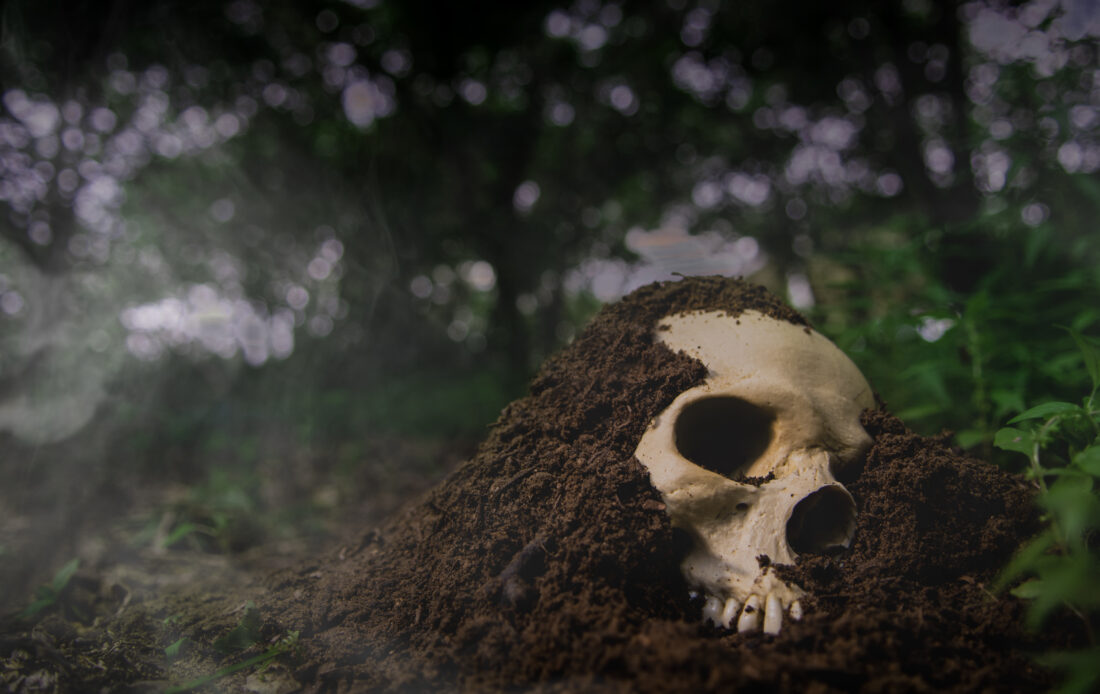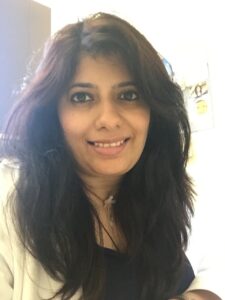Progress Notes: Dr. Shirley Lewis

Dr. Shirley Lewis first discovered the field of forensics in the pages of popular fiction and nonfiction, but her curiosity evolved into a professional pursuit. Today, the clinical assistant professor at Texas A&M School of Dentistry is a leading voice in the field of forensic dentistry.
Within the last two years, she has developed an elective course in forensic dentistry for fourth-year dental students and has established an ADEA special interest group – Forensic Odontology and Forensic Sciences (FOFS).
“I had never considered any other specialty besides forensics,” Lewis said. “When I was in my 20s, I read a lot of novels, many of which included something about forensic cases. I just thought that was so interesting … the puzzle and the way they put it all together.”
Lewis received her Bachelor of Dental Surgery in 1995 from the College of Dental Surgery in Manipal, India, but it was several years before she was able to pursue a forensic specialty. In 2010, she enrolled in a forensic odontology fellowship at the University of Texas Health Science Center at San Antonio Dental School.

Forensic dentistry focuses on identification of the deceased, alleged criminals and missing individuals in various scenarios. Lewis said this type of forensics is important because dental records are often the only remaining evidence and key to solving a case.
“I think if we’re not aware of that, as dental providers and hygienists, we can get a little complacent in our X-rays and impressions,” she said. “It is imperative that dentists and hygienists make a note of a patient’s crowded teeth and other anomalies for future evidence.
“At the end of the day, it may not be enough, but it is one of the key factors in identifying a person, so I’m trying to get students to understand the significance of these records to collecting evidence from bite marks, teeth and signs of abuse.”
In her research, Lewis found academic papers written in the 1970s outlining the importance of forensic education in dental school curriculum, but the idea never really took off. She said of the 81 accredited dental schools in the U.S. and Canada, only a few currently address the topic. Lewis began incorporating forensics into the public health course curriculum at Texas A&M School of Dentistry a few years ago, and now it’s included in a comprehensive dental course. Lewis has made presentations at ADEA the last two years, explaining to faculty from other schools how to incorporate it in their current curriculum.
“I broke down every course in dentistry, explaining how they could incorporate forensics and provided examples of cases to include,” she said. “I demonstrated ways to make it interesting for students so they could learn how basic sciences and dental courses are relevant and utilized in the forensic world.”
A criminal case she often uses as an example is that of serial killer Ted Bundy, who was convicted in 1979 after a forensic odontologist confirmed Bundy’s dental impression matched the bite mark on his victim. Lewis also cites the use of dental records in 2021 to identify the remains of Brian Laundrie, who confessed in a notebook found with his body to killing his fiancée, Gabby Petito.
As interest grew among students, Lewis was able to create a forensic dentistry elective for fourth-year students two years ago and received good feedback.
“I’ve taught it three times so far, and I’m constantly updating and improving it. I’ve made it better,” she said. I recently incorporated cold case scenarios as part of the elective, and I have two other faculty members, Dr. Lara Coseo and Dr. Kerin Burdette, who role-play with me as prosecution, defense and judge.
Dr. Marzia Zendali, who graduated in May and recently started an oral and maxillofacial surgery residency with the U.S. Navy in San Diego, felt like it was important to take the class since she’s in the military.
“If I do get on a ship, it will be important for me to know how to identify people using their teeth and how to help those who may have been falsely accused based on their teeth or bite marks,” she said.
This year Lewis was also able to offer students hands-on experience by facilitating their participation in Disaster Day – the nation’s largest student-led interprofessional emergency response simulation, held annually at Texas A&M University in College Station. During the simulation, student teams come together to diagnose, treat and care for “injured” patients and populations, all of whom are volunteer actors.

“This is the first year dentistry was involved,” Lewis said. “It’s always been medicine, pharmacy, nursing, veterinary medicine, athletic training and psychology, so this was a huge accomplishment, possible due to the support of our dean, Dr. Lily García, and Dr. Christine Kaunas, executive director of interprofessional education and research at the Texas A&M Health Science Center, advocating on our behalf. This allowed our students to take what they were taught in the classroom and apply it in a real-life scenario.”
Then-second-year dental student Makayla Medrano served on the Disaster Day Student Planning Committee, working with Lewis to create the dental cases for the event. A total of eight dental students participated. They evaluated patients, who were “injured” in the disaster, for head and neck injuries specifically to their teeth, jaws and faces. They also assisted and observed other professionals in their course of treating patients.
Dr. Katy Andress, who graduated in May, said it was a little stressful at the start because the actors were intense.
“They were screaming and crying,” she said. “We had to try and figure out what had happened to each patient and how to help them with the chaos of a disaster going on. I think that in a real disaster situation, I’d be a lot more prepared now that we’ve practiced.”
The students also documented the features of the “deceased” in the simulated morgue.
Lewis gave the students post-mortem forms to collect evidence about the deceased individuals, which included the clothes they were wearing, their hair color and any visible birthmarks, among other things. Most importantly, the students documented the dental records of the deceased in case they were needed for identification purposes. Lewis said this allowed her to incorporate the forensic aspect into Disaster Day, which was appreciated and well-received by other participating faculty members.
Zendali said participating in Disaster Day was one of her best experiences in dental school.
“It’s a great opportunity for students to see where we fit in the grand scheme of things, learn about forensics and how to work with doctors and nurses to make sure every patient gets treated fairly and efficiently,” she said. “I liked being in forensics with Dr. Lewis and being able to put what I learned to use at Disaster Day.”
Lewis said she hopes the creation of the ADEA FOFS SIG group will emphasize the importance of including forensic dentistry in dental school curriculum. She has support of faculty members within the School of Dentistry, including Dr. Brent Hutson, and from those across the U.S. and Canada. Several have reached out through her presentations at ADEA, requesting her syllabus or personal input on how to incorporate forensics on their respective campuses.
Lewis also makes an effort to work with her peers on cases across the country and has assisted with cases in the Dallas/Fort Worth area, all in an effort to grow professionally and serve the community by helping law enforcement.
It’s a line of work most dentists hope to avoid, but Lewis emphasizes the importance of the science and meticulous record keeping for complete care of the patient – no matter the turns their life may take.
“I mean, God forbid, something happens to one of your patients,” she said. “But what if they’re under investigation, go missing or are avoiding law enforcement for some reason? Dental ID is a big thing.
“That’s why I want to emphasize the role we play as dental providers – it needs to be driven home.”